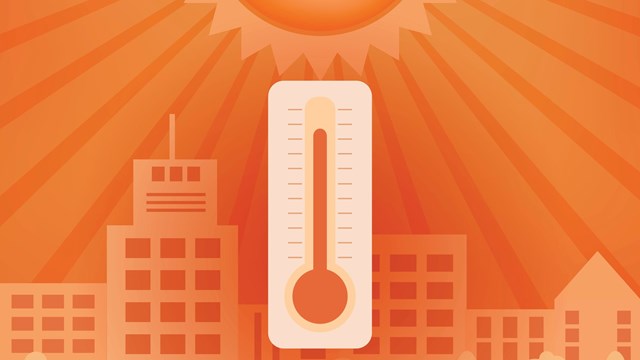Energy efficiency has become a “buzz word” over the past couple years throughout Chicagoland and more and more gadgets and devices have come on the market that are specifically designed to use less energy. Saving energy does a lot more than just reduce a building’s carbon footprint and toxic emissions; however, going green can save a building some green too. The steps condos and HOAs can take to reduce energy consumption and save money range from the very simple to the very complex.
We asked various energy experts to offer their best tips for saving energy and money. Remember, the list is just a start—there are many ways in which you can go green, but following some of these ideas is a great beginning.
Check Your Current Systems
Without a doubt, all of the experts agreed that keeping your current systems maintained was the number one way to save both energy and money.
Jim Stoller, a licensed architect and president of The Building Group in Chicago, a property management firm, suggests bringing in a licensed engineer to evaluate your current system and come up with cost-effective, low energy solutions that have a three- to- five year payback.
“The buildings that were built over ten years ago in Chicago have older systems and there’s been a huge efficiency increase in modern equipment, and the back of the house equipment is not something that most management companies or managers understand or are technically capable of analyzing,” he says. “These engineers will be able to determine where you can save energy. The big savings can be with the back of the house equipment, like fans, motors and pumps.”
Schedule an Energy Audit
With anything in life, it’s hard to know where you’re going when you don’t know where you’ve been—and a condo building is no different. An energy audit—performed by a certified professional from a reputable firm—will provide an overview of how much energy your building is saving and losing. The experts say that, as a result, you’ll see what changes you may need to make.
“An energy audit will provide the most up-to-date energy efficiency solutions and it will be customized to your co-op or condo,” says Stoller. “They are experts and will let you know what you need to change. Not only is the energy audit paid for by ComEd but the savings are real, immediate and they continue.”
Hiring a company to do an audit can point out problems. According to Priority Energy, an energy auditor that conducts audits in Chicago and the Midwest region, sealing leaky air ducts to keep conditioned air from leaking outside will greatly reduce your energy use and could lower utility costs by as much as 30 percent a year. The company says that by reducing the strain on heating and cooling systems, they will perform better and last longer.
Learn About Incentives
If you want to install energy-saving accessories, such as low-flow shower heads, it’s possible to earn money back if you know how.
A good place to start, says Stoller, is to check out the Illinois Home Performance website, www.illinois homeperformance.org/rebates. The website offers information on the Ameren Illinois’ Act On Energy Program that offers rebates on insulation and air sealing work up to $5,000, The Nicor Gas Energy Efficiency Program that provides education, resources and cash rebates for installing high-efficiency furnaces, boilers and water heaters and the North Shore Gas current program, that runs through May 31, 2013 offers up to: $450 on complete system replacements (furnace and central air conditioner), $450 for boilers, $200 for furnaces, $100 on boiler reset controls, $200 on water heaters, and $0.10 per square foot for attic insulation.
Westbrook South Condo Association in Downers Grove, a two-building 96-unit complex, is projecting that it will save nearly $775,000 over the next 20 years by partnering with DRF Trusted Property Solutions and Nicor Gas through its Resource Conservation Solutions program. The condo had extremely high heating costs due to inefficient boilers that were around 40 years old. The $300,344 project involved the replacement of Westbrook’s existing boilers with eight 600,000 BTU boilers and four indirect water heaters. The condo’s costs decreased significantly as a result.
Village on the Lake Condominiums in Elk Grove Village also was plagued by inefficient 40-year-old boilers at its 94-unit development. Working with DRF and Nicor to get bank financing, they completed a $284,730 project that they expect will save them 31,600 therms annually. Contact DRF at 630-615-7000 or go to www.drfinstalls.com for more information.
Flip the Switch – Off.
One of the easiest ways to cut back on how much electricity the building uses is to change how it’s lit. Inefficient lighting can consume up to 15 percent of a building’s energy needs or more. Energy-efficient lighting can reduce consumption by 50 percent or more.
“LED lighting in common areas can substantially reduce electricity consumption,” says Hans Hermann, president of Cost Containment International, an energy and sustainability consulting firm based in Chicago. “Occupancy sensors for trash chute rooms or other areas that have occasional usage can save on electricity all year long.”
CFLs emit as much light as regular incandescent bulbs but can last from 8 to 10 times longer and use anywhere from 50 to 75 percent less electricity. Replace all of the common area lighting with more energy-efficient light bulbs and the savings can be huge. According to Energy Star, replacing one 60 watt incandescent bulb with a 13 watt CFL will save $56 in energy costs over the CFL’s lifetime (at $0.12/kWh). In addition, CFLs reduce future costs of purchasing new lamps—and the labor costs associated with changing light bulbs—because they last 10 times longer.
Better Appliances and Accessories
It’s simple, upgrade appliances to ones that are more energy efficient and you’ll see a major difference. When you’re choosing new appliances, look for the Energy Star certification and the EnergyGuide Label. The certification means that the appliance has met standards that make it an energy-efficient unit. They use less energy and water than the older models and are equipment changes each homeowner that’s in the condo association can make.
According to ComEd a refrigerator purchased today is almost four times more efficient than one purchased in the 1970s. If you are thinking about buying a new appliance, you may want to compare appliances using the full life-cycle cost—that is, the cost of ownership over the life of the appliance. You can calculate it by using this formula: (Annual Energy Cost x Expected Life Cycle Years) + Purchase Price = Life-Cycle Total Cost.
“Don’t forget to install low flow faucets, shower heads and toilets because they conserve water,” adds Hermann.
Insulate, Insulate, Insulate
In addition to rebate incentives, insulating your home will not only help reduce your heating and cooling costs, making it more energy efficient, but it will also make your home more comfortable, say energy experts.
“Proper insulation can cut 10 percent off your energy bill,” says Hermann. “Target leak areas: Wall air conditioners, doors, windows, outlets, and fireplaces. Insulated interior shades can keep heat out in the summer and heat in during the winter.”
According to TCI, a national energy auditor, “most U.S. homes should have between R-22 and R-49 insulation in the attic. Insulating ceilings, walls, attics, floors, crawl spaces and basements to recommended standards can reduce heating and cooling costs by 5 percent to 50 percent.” According to the EPA Energy Star guidelines, recommended levels of insulation for Chicago, which is in Zone 6, should be anywhere from R-49 to R-60 in the attic and R-25 to R-30 for the floor.
Adjust Your Thermostat
Individually, condo or co-op owners can save energy by adjusting their thermostats. Energy experts say that if you set your thermometer back one or two degrees you can save 10 percent on your cooling load and that setting your thermostat a degree warmer in the summertime and a degree cooler in the wintertime would make a big difference. “Setting your water heater to 120 degrees will help lower your electric bill and make your home safer for children,” says Hermann. “Co-op and condo owners can also keep energy use down by keeping the fridge between 37 to 40 degrees and the freezer compartment between zero and five degrees.”
Unplug Your Appliances
Unplugging appliances when you are not using them is as easy as pie but according to energy efficiency experts, few people do it.
“A TV left on for eight hours a day or while you sleep will cost you about $41 to $102 per year,” says Hermann. “And don’t forget to turn off your monitor when shutting down your computer because it can use twice as much energy.”
Hermann also recommends cleaning in the lint trap in your dryer to keep it running more efficiently and to reduce hot water use by washing clothes in cold water if possible, and to always use the cold-water rinse.
Upgrade Windows
Chicagoans are no stranger to harsh winters. If your windows are more than 15 years old your home could get drafty in the winter time in a hurry.
“There’s tremendous savings in window replacement. Most buildings built in Chicago before 1970 only has single glazed windows so the cold weather will pass almost directly from the inside to the outside,” says Stoller. “New windows are far more energy efficient. The new windows have two panes of glass. It’s called thermo pane. That’s when they have two panes with an air space between them so it’s an insulated glass panel. When you put in new windows in, not only are people happy with energy savings, their units are also much quieter.”
Consider Energy-Efficient Landscaping
Not only does landscaping add beauty to your home, it can also help lessen your energy bills. On average, landscaping provides enough energy savings to return your initial investment in less than 8 years says the Department of Energy.
According to ComEd, trees can reduce surrounding air temperatures by up to nine degrees. Temperatures directly under trees can be as much as 25 degrees cooler than the air above nearby asphalt and trees that lose their leaves in the winter give protection from the summer heat while allowing the sun to warm your home in the cold of winter. Plant trees to the south, east, and west of your home to reduce the impact of solar heat.
Lisa Iannucci is a freelance writer and a frequent contributor to The Chicagoland Cooperator. Staff Writer Christy Smith-Sloman contributed to this article.







Leave a Comment